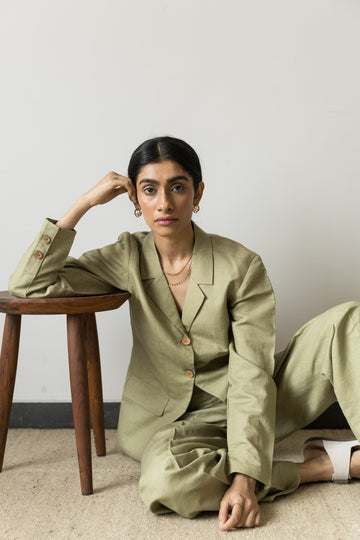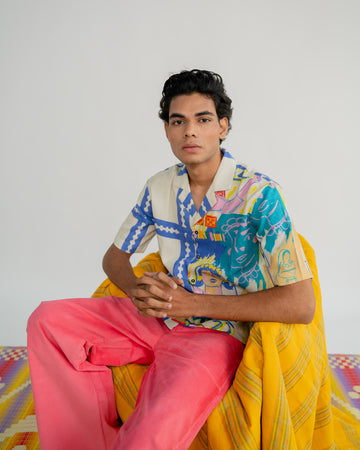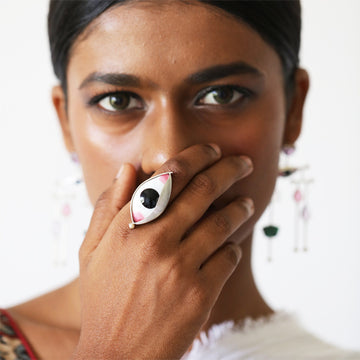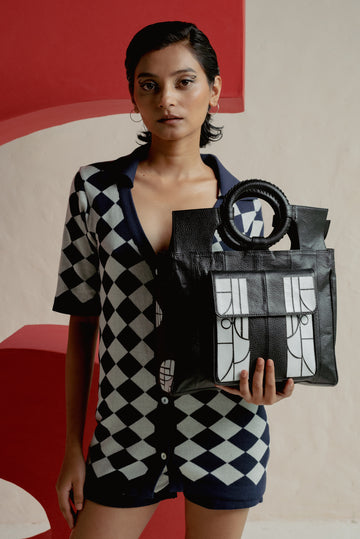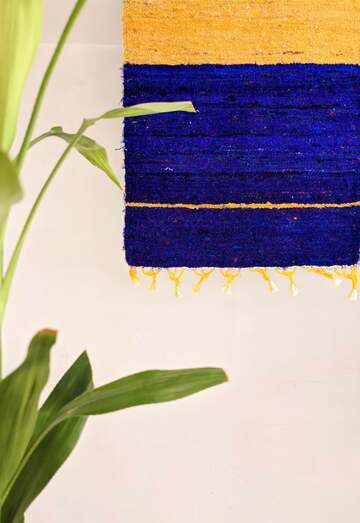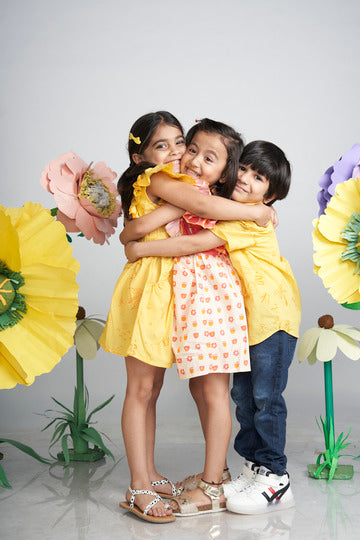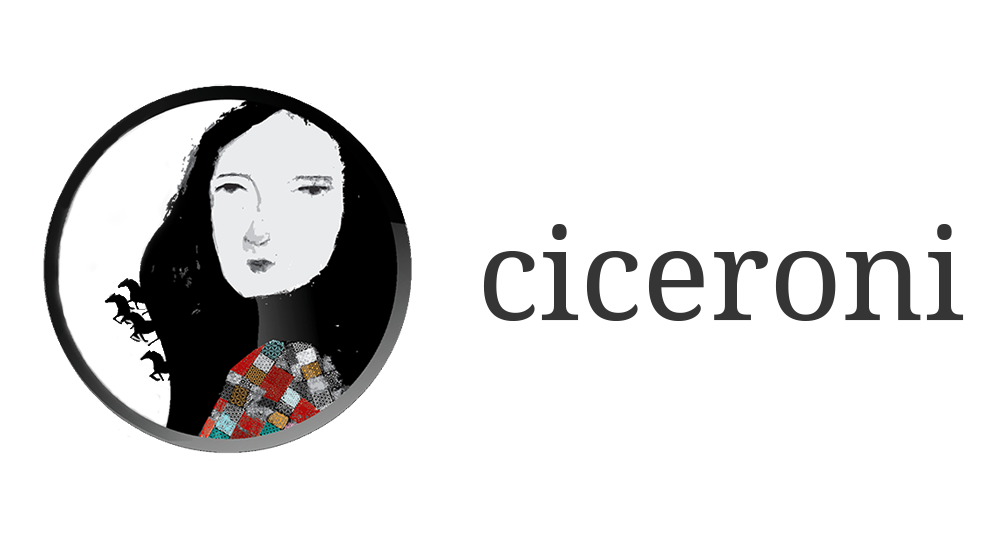The enthralling weaves of Banarasi, the exquisitely woven Kanjeevarams, the regal zardozi, the humble khadi and the rooted moiraingphee; Indian textiles are a treasure trove of culture, community and rooted style. With the festive season beginning with Ganesh Chaturthi, one wonders about the contemporary usage of the quintessential Maharastrian textiles Paithani and Khun as women throng the markets to get their share of new saree for the puja celebrations. Would the young modern Indian opt for sarees or will they resort to contemporary drapes and yet stay rooted to culture?
At Ciceroni, we have always adored the ardent love for our textile traditions and supported the local artisans and weavers; but we have also always encouraged a shift in the way we perceive them, these handwoven wonders of magic should be enjoyed with modern nuances and trailblazing edifice. Ganesh Chaturthi, an auspicious Hindu festival celebrated for 10 days every year, reminds one of pandal hopping, visiting relative’s home for Ganesh puja, gorging on modaks while flaunting our sartorial best. And if handloom trends were to be accounted for, there would be melange of textiles like Paithani, Puneri, Narayan peth and Khun for the celebratory style.
The present-day Maharashtra boasts a long history of empires and political prowess and its impact on culture and people. Along with the changing rulers and empires, culture became a melting potpourri of beliefs and traditions. Food, clothing, music, architecture and other intangible aspects of communities kept evolving with changing times during the rule of the Sultanates, the Mughals and the Marathas and the Peshwas. These empires created patronage in terms of industries, artisans and crafts. Textiles and handlooms were transported to this region and over the course of time, became indigenous to the place.
Modern Design Grammar of KHUN
Hailing from Guledagudda village in the Bagalkot district of North Karnataka and spanning a hundred years of origin, the Khun weave predominantly finds patronage in selected regions of its home state and neighbouring Maharashtra. The fabric is often collectively known as Guledgudda Khana, with “khana” being a prominent blouse fabric of the state. As per one of the many stories about this fabric, “khun” translates to “sugar” in Marathi and it was predominantly worn by women living in the sugar-growing regions of Maharashtra and parts of Karnataka.
Giving Ciceroni a detour on how the fabric has gone from being called the ‘blouse fabric’ to a modern woman’s must-have, Vidya Krishanater, Founder Kapasika shares “In ancient times, the fabric was predominantly woven to craft sari blouses which blend in effortlessly with the equally revered Ilkal saris. Silk yarns are used as the warp with varying counts and widths, while cotton yarn is placed in as the weft. The fabric is woven with techniques such as ground warp, border warp and extra warp, with each requiring a different yarn count. An array of can be produced using these techniques, some of them being Kolu Teru, Navalpari, Kalawar Balli, etc. Today with changing times, as revival of textiles and fabric takes precedence and with the millennials being more aware about their shopping choices, our collection involves kurta sets, anarkalis, skirts and tops.”
Kapasika label reinterprets Khun into modern avatars like kaftan tops, day wear tops and kalidar skirts for those who want to flaunt handlooms but not stick to saree.




At Ciceroni, we have always adored the ardent love for our textile traditions and supported the local artisans and weavers; but we have also always encouraged a shift in the way we perceive them, these handwoven wonders of magic should be enjoyed with modern nuances and trailblazing edifice. Ganesh Chaturthi, an auspicious Hindu festival celebrated for 10 days every year, reminds one of pandal hopping, visiting relative’s home for Ganesh puja, gorging on modaks while flaunting our sartorial best. And if handloom trends were to be accounted for, there would be melange of textiles like Paithani, Puneri, Narayan peth and Khun for the celebratory style.
The present-day Maharashtra boasts a long history of empires and political prowess and its impact on culture and people. Along with the changing rulers and empires, culture became a melting potpourri of beliefs and traditions. Food, clothing, music, architecture and other intangible aspects of communities kept evolving with changing times during the rule of the Sultanates, the Mughals and the Marathas and the Peshwas. These empires created patronage in terms of industries, artisans and crafts. Textiles and handlooms were transported to this region and over the course of time, became indigenous to the place.
Modern Design Grammar of KHUN
Hailing from Guledagudda village in the Bagalkot district of North Karnataka and spanning a hundred years of origin, the Khun weave predominantly finds patronage in selected regions of its home state and neighbouring Maharashtra. The fabric is often collectively known as Guledgudda Khana, with “khana” being a prominent blouse fabric of the state. As per one of the many stories about this fabric, “khun” translates to “sugar” in Marathi and it was predominantly worn by women living in the sugar-growing regions of Maharashtra and parts of Karnataka.
Giving Ciceroni a detour on how the fabric has gone from being called the ‘blouse fabric’ to a modern woman’s must-have, Vidya Krishanater, Founder Kapasika shares “In ancient times, the fabric was predominantly woven to craft sari blouses which blend in effortlessly with the equally revered Ilkal saris. Silk yarns are used as the warp with varying counts and widths, while cotton yarn is placed in as the weft. The fabric is woven with techniques such as ground warp, border warp and extra warp, with each requiring a different yarn count. An array of can be produced using these techniques, some of them being Kolu Teru, Navalpari, Kalawar Balli, etc. Today with changing times, as revival of textiles and fabric takes precedence and with the millennials being more aware about their shopping choices, our collection involves kurta sets, anarkalis, skirts and tops.”
Kapasika label reinterprets Khun into modern avatars like kaftan tops, day wear tops and kalidar skirts for those who want to flaunt handlooms but not stick to saree.


Paris Couture Week participant and Designer – Vaishali Shadangule, who is well known for her work with traditional Indian crafts elaborates on the change in the perception of the Khun fabric as she comments, “Like Banarasi, khun is also a brocade weave dotted with beautiful, small motifs and is extremely lightweight. Khun blouses are generally worn by women selling vegetables or flowers but when I saw it, I knew it could be expanded upon and presented to urban markets. For my ‘Bisra’ collection, I wanted to diversify the fabric into home furnishings, home décor in addition to the line of fashion wearables. There were dresses, jackets and shorts for the modern women who not only are in love with the traditional Indian crafts and textiles, but are willing to help us resurrect them from the grassroot levels.”
Think of Khun dress and jacket for Ganesh Chaturthi celebrations.


Think of Khun dress and jacket for Ganesh Chaturthi celebrations.


Timeless Paithani & Modern Interpretation
The Paithani sari has its origins in antiquity, hailing from the royal dynasties of the medieval town of Paithan near Aurangabad. Named after the town, the sari is believed to have been originally made with the finest silk threads from China and pure zari that was spun locally. This sari signifies the years of luxury and intricacy of Indian handlooms. Every piece is characterised with the luxurious and liberal use of gold, as well as floral and bird-inspired motifs. The modern iterations of the sari from Paithan and Yeol are crafted from homegrown silk threads from Bangalore, while the zari is sourced from Surat.
Giving us an insight into the evolution of Paithanis in the millennial world, Designer Gaurang Shah shared “Paithani saris are an integral part of Maharashtrian culture. Over the years, this heritage weave has been given a contemporary update as textile designers and craft proponents find newer ways of embracing their roots. Most of them opt for tucking the pleats on the sides, and draping the remaining yardage around the neck like a dupatta. Other unique ways to style this sari include swapping the conventional blouse in favour of white shirts and jackets, well-cut tank tops or a T-shirt. Brides can also choose to drape the sari like a gown.”
The Paithani sari has its origins in antiquity, hailing from the royal dynasties of the medieval town of Paithan near Aurangabad. Named after the town, the sari is believed to have been originally made with the finest silk threads from China and pure zari that was spun locally. This sari signifies the years of luxury and intricacy of Indian handlooms. Every piece is characterised with the luxurious and liberal use of gold, as well as floral and bird-inspired motifs. The modern iterations of the sari from Paithan and Yeol are crafted from homegrown silk threads from Bangalore, while the zari is sourced from Surat.
Giving us an insight into the evolution of Paithanis in the millennial world, Designer Gaurang Shah shared “Paithani saris are an integral part of Maharashtrian culture. Over the years, this heritage weave has been given a contemporary update as textile designers and craft proponents find newer ways of embracing their roots. Most of them opt for tucking the pleats on the sides, and draping the remaining yardage around the neck like a dupatta. Other unique ways to style this sari include swapping the conventional blouse in favour of white shirts and jackets, well-cut tank tops or a T-shirt. Brides can also choose to drape the sari like a gown.”


To say that craft is having a moment is an understatement. On one hand, the conscious consumers are putting their money by supporting innumerable weavers and craftsmen across India and on the other, the brands are reinventing the wheel to make craft products relevant. How are you styling this ancient textile to mark the festive season this year?

